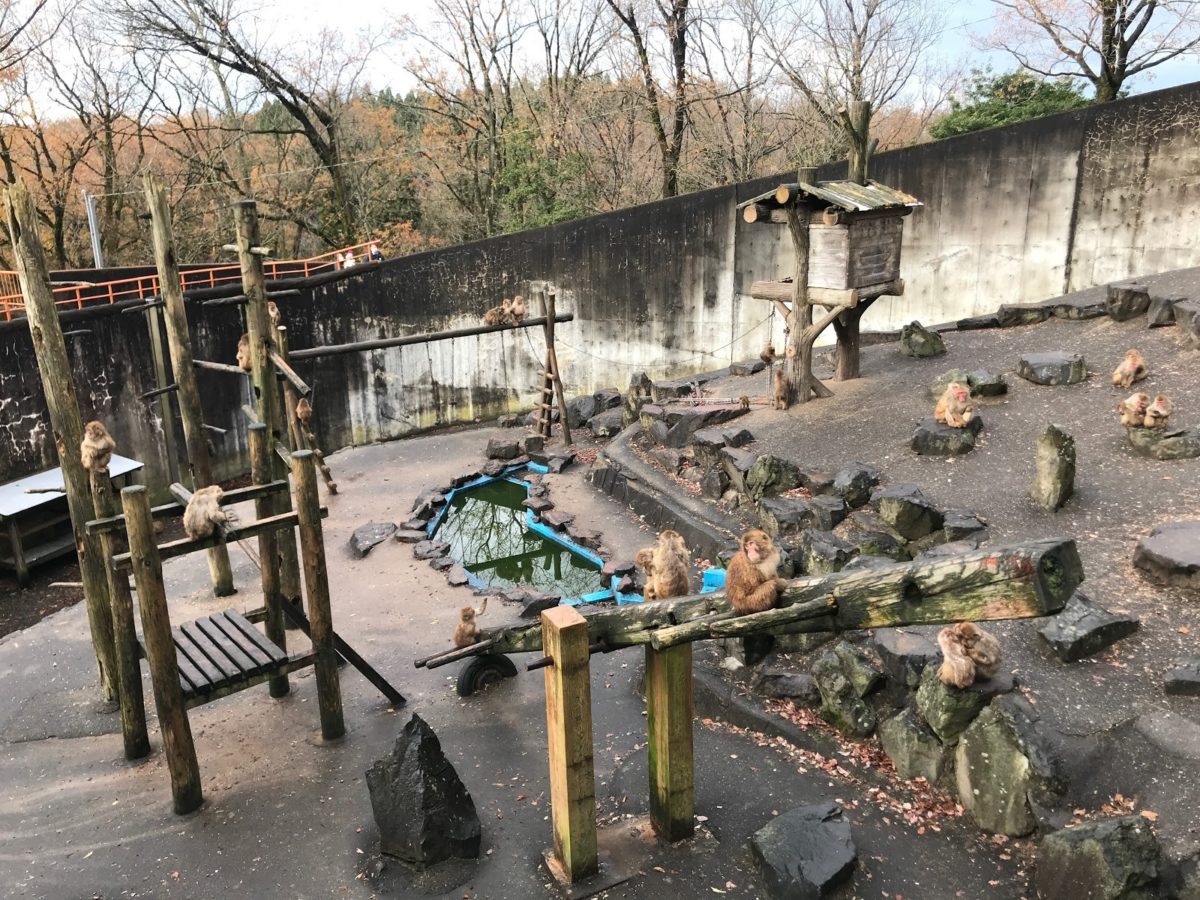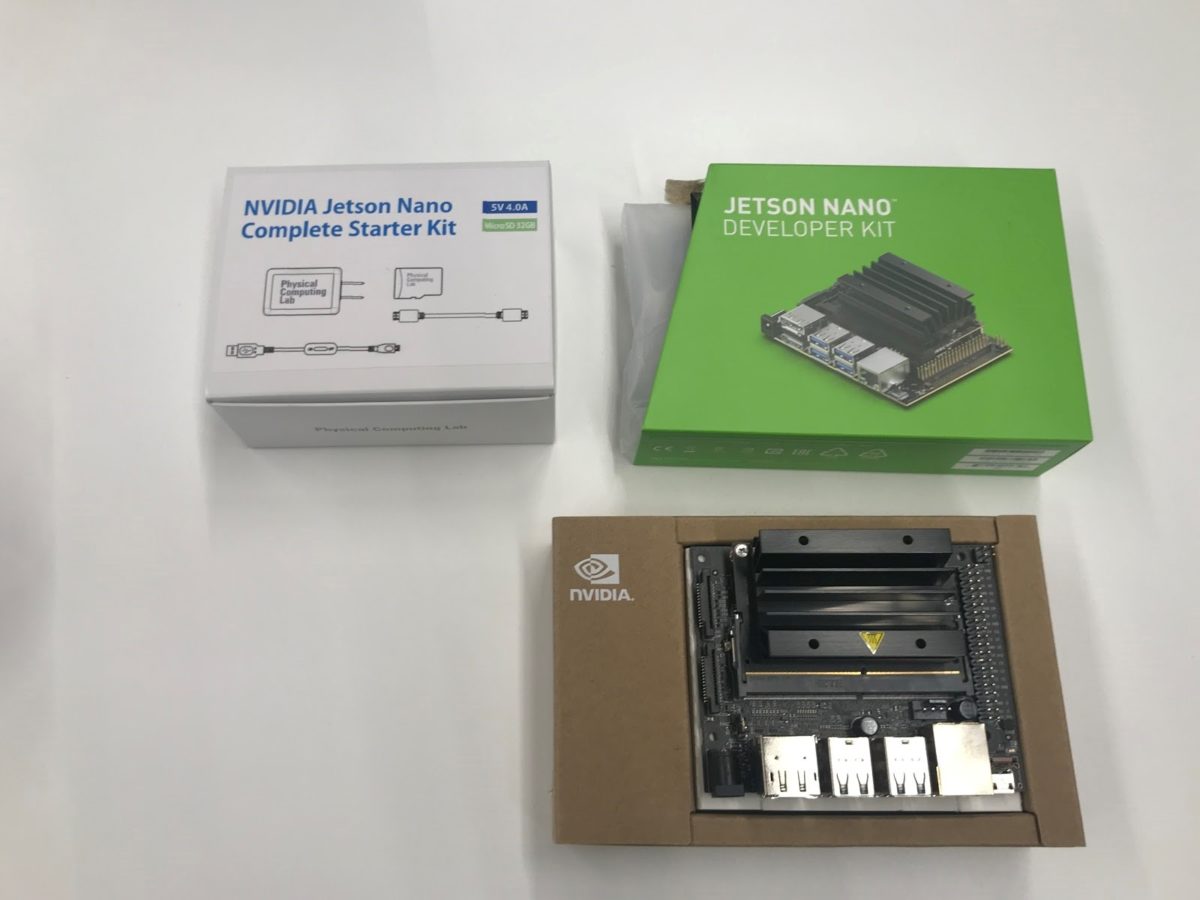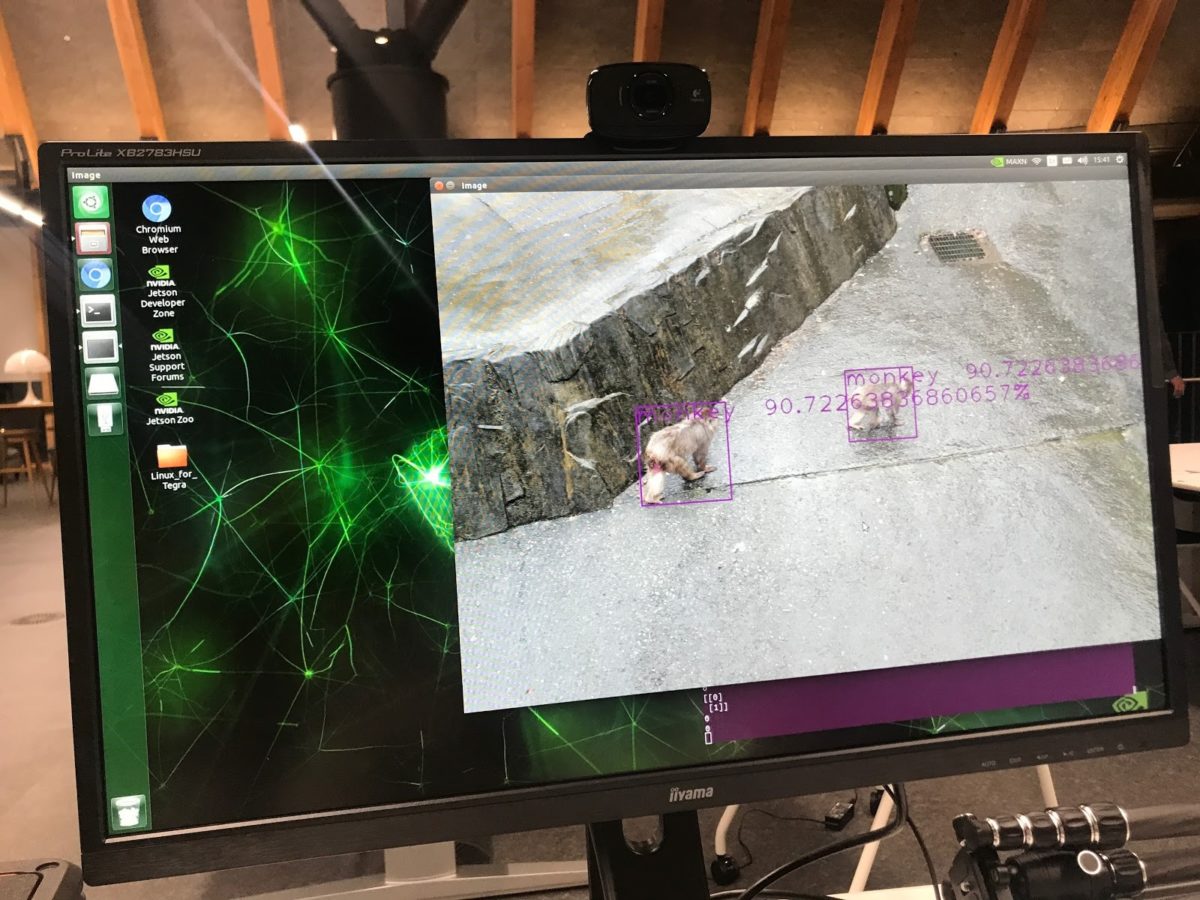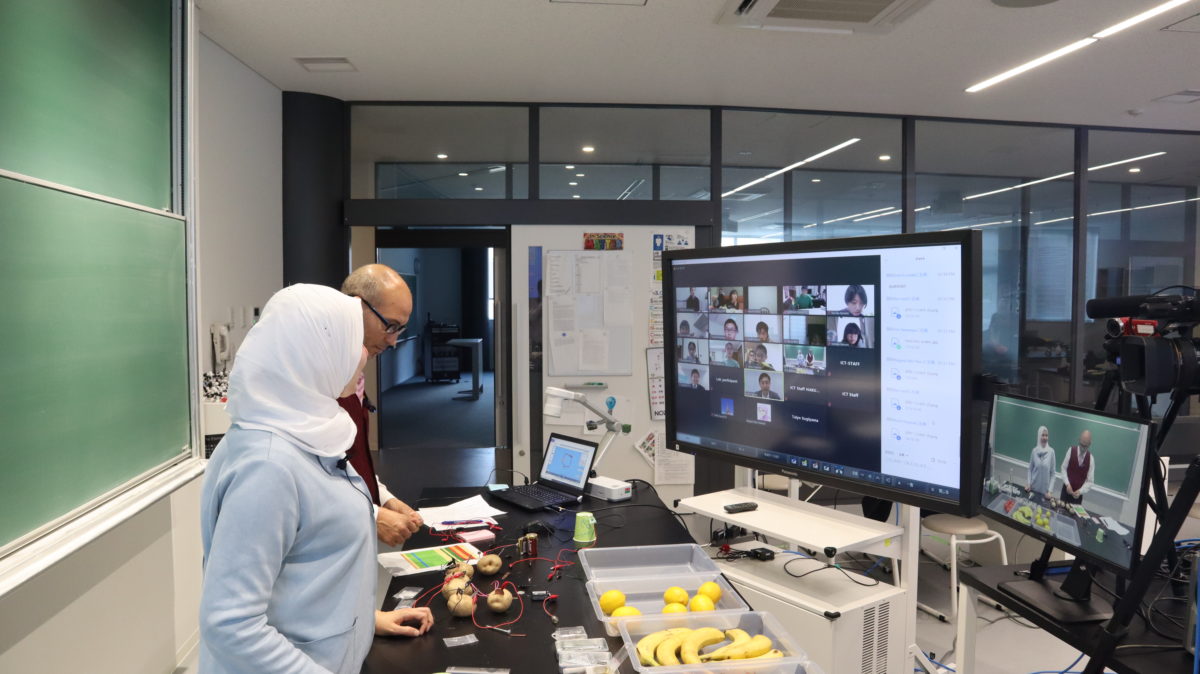Hakusanroku Journal 白山麓ジャーナル: 2020年12月の記事
December 23, 2020 The story of the monkey project

 Hello everyone, Welcome back to the journey (^o^)//. As you follow Hakusanroku Journal, The group of second-year students has been doing in Engineering Design class. Some of the students planted sweet potatoes in the garden across the campus. Unfortunately, The monkey gangsters stole the lovely sweet potatoes from the students.
Hello everyone, Welcome back to the journey (^o^)//. As you follow Hakusanroku Journal, The group of second-year students has been doing in Engineering Design class. Some of the students planted sweet potatoes in the garden across the campus. Unfortunately, The monkey gangsters stole the lovely sweet potatoes from the students.
Following this journal : https://www.ict-kanazawa.ac.jp/journal/12370/
皆さん、こんにちは。旅路へおかえりなさい(^o^)// 白山麓ジャーナルを普段から読んでいる方は、2年生のグループによるエンジニアリングデザインの活動について読んだことがあるでしょう。キャンパスの向かいの畑にさつまいもを植えた学生のグループがいます。しかし、残念ながら愛情を込めたさつまいもは猿のギャングによって盗まれてしまいました。

However, The “Agri-tech” group decided to create a system that can detect the monkey by using Artificial Intelligence (AI). They went to Ishikawaken Shinrin Koen Forest Zoo in Tsubata-machi and took photos of monkeys for teaching a machine (Machine Learning : ML) to recognize the monkey.
これを受けて、「アグリテック班」は人工知能(AI)を利用して猿を検知できるシステムの制作を決意しました。津幡町にある石川県森林公園の動物園で猿の写真を撮って、機械に学習させました。(機械学習=ML)
In my part, I have been used to Machine Learning before. Then, I suggest the student use the Jetson nano development board for their project. Jetson nano is a Small, Powerful computer for makers, learners, and developers. It’s easy to get started building practical AI Applications.
私は以前にも機械学習をしたことがありましたので、学生たちにJetson nano development boardを使うように勧めました。Jetson nanoはエンジニア、学生、開発者用に作られた小型ながらパワフルなコンピューターです。AIを使った実用的なアプリケーションを初めて作る人に適しています。
After the students took a Thousand monkey photos, We had to supervise the machine to recognize the monkey. We start designing the system and labeling all the images where the monkeys are in the photos.
猿の写真を千枚撮ったら、次は機械が猿を見分けられるように手助けしなければなりませんでした。ここではシステムを設計して写真の中の猿にラベルを付けました。
The students spend a couple of weeks training a model that uses 100 images, 200 images, 300 images, and increasing to 1500 images and So on.
学生たちは数週間かけて、100枚、200枚、300枚…1500枚…と枚数を増やしていきました。

Finally, We got a model that is high accuracy and satisfied.
ようやく満足できる高い認識率を達成できました。
We went back to Forest park again and tested our machine. As you can see in the video, The system can detect real-time and count the monkeys by using a USB camera.
完成したモデルを持って森林公園に戻り、試験を行いました。下の動画で見てわかるように、システムがUSBカメラに映った猿をリアルタイムで認識して数えています。
In the future, The students plan to make a box cover the device and install the machine in their garden to protect our sweet potatoes from the monkey.
将来的にはデバイスを収納する箱を作って、畑に設置してさつまいもを猿から守りたいです。
Apirak Sang-ngenchai
アピラク・サンゲンチャイ
+++
電気学会 U-21 学生研究発表会で最優秀賞受賞
学生3名はSDGsをテーマにこの研究を電気学会「U-21学生研究発表会」で発表し、見事、最優秀賞を受賞しました。詳しくはこちら。
December 21, 2020
 Hello everyone, Jomkit here with my very first journal entry! It’s been a few weeks since I started working here, but the beauty of nature still astounds me. I am not much for photography, but when I see the landscape surrounding us I can’t help but try and capture it on my phone. I’m no stranger to towering mountain ranges and trees that carpet them, but in my hometown of Portland, Maine, I would need to drive 45 minutes out of the city to see such magnificence. Here, all it takes is one glance out the window and I’m faced with a visage painted by the turning of the seasons.
Hello everyone, Jomkit here with my very first journal entry! It’s been a few weeks since I started working here, but the beauty of nature still astounds me. I am not much for photography, but when I see the landscape surrounding us I can’t help but try and capture it on my phone. I’m no stranger to towering mountain ranges and trees that carpet them, but in my hometown of Portland, Maine, I would need to drive 45 minutes out of the city to see such magnificence. Here, all it takes is one glance out the window and I’m faced with a visage painted by the turning of the seasons.
With that being said, the Hakusan area is much quieter than what I’m used to. Growing up I lived in the city next to a hospital, so there were many nights where I fell asleep in conditions some people would consider too noisy to think. But I’m getting used to the calmness of the rural area, and there’s certainly a few sights to see. One thing that has helped me deal with homesickness is walking to the nearby coffee shops, such as Kijitora or Koubou. I absolutely love trying new coffee, and neither of these places have disappointed. Kijitora’s style is delightfully reminiscent of the cafes in my hometown, and they have a fantastic selection of espresso drinks. Koubou on the other hand may only offer a limited selection of drink styles, but their cozy seats and warm atmosphere really makes you lose track of time. The homemade baked goods are likewise delightful. I’ve heard the coffee scene in Ishikawa is bustling, so I look forward to getting to know the specialties of local shops and roasters.
Jomkit Jujaroen
はじめまして。ジョムキット先生の最初の白山麓ジャーナルですよ!ここで働き始めてから数週間が経ちましたが、いまだに周辺の自然の美しさに驚かされます。写真は得意じゃありませんが、周りの地形を見るとスマホのカメラ機能で捉えようとしたくなります。そびえたつ山麓や生い茂る森林は私の故郷のメーン州のポートランドにもあるのですが、見るためには市外へ45分は運転しないといけません。ここでは窓の外をのぞくだけで季節に彩られた風景画が目に飛び込んできます。
それはそうと、白山麓は故郷よりずっと静かでもあります。町中の病院の隣の家に生まれ育った私は、人によってはとても眠れないような光と騒音の中眠りにつくことに慣れています。しかし、人里離れたここの静けさに馴染んできました。ホームシックを紛らわせるためによくしているのはキジトラコーヒー研究所や珈琲KOUBOUなどのカフェまで散歩することです。新しいコーヒーを試すのは大好きで、いずれの店も納得の美味しさです。キジトラは故郷のコーヒーを思い出させてくれる素敵な味ですし、エスプレッソの種類が豊富です。KOUBOUは飲み方のバリエーションこそ少ないですが、温かみのある雰囲気が時間を忘れさせてくれます。手作りの焼き菓子も最高です。石川県はコーヒーに熱い県と聞いていますので、地元の店やロースターを回るのが楽しみです。
ジョムキット・ジュジャロエン
December 14, 2020 Experiencing the Fall Scenery
 Hello everyone! My name is Brandon Wohlfarth and I just started teaching here at ICT, so this is my first Hakusanroku Journal entry. Since arriving at the Hakusanroku campus I have been blown away by the wonderful scenery surrounding campus. The mountains reaching up towards the sky, the rich reds and browns that mark the fall season, have all impressed me.
Hello everyone! My name is Brandon Wohlfarth and I just started teaching here at ICT, so this is my first Hakusanroku Journal entry. Since arriving at the Hakusanroku campus I have been blown away by the wonderful scenery surrounding campus. The mountains reaching up towards the sky, the rich reds and browns that mark the fall season, have all impressed me.
The natural landscape of the Hakusanroku campus is a stark contrast from many of the locations that I have lived in the United States. I attended Rose-Hulman Institute of Technology located in Terre Haute, Indiana where I received both my undergraduate and master’s degree. While I love Indiana, unfortunately the scenery only consisted of flat land used primarily for agriculture. This made outdoor activities such as hiking much less enjoyable. The difference between these two locations is truly like comparing night and day, completely different. After the winter, I am looking forward to being able to hike and explore the various trails in the Hakusan area.
I have been lucky so far that the weather has been pleasant so that I can still take the opportunity to enjoy nature before the snow and cold comes in. I have enjoyed walking around the Hakusanroku campus and the surrounding area. I am excited to see how the natural landscape surrounding us changes as the seasons progress, and in what other ways it may differ from what I have experienced in the past. Below are some of the pictures of the surrounding area that I have taken so far. I am not the greatest photographer so bear with me. Over the last few weeks it has been wonderful meeting the students, faculty, and staff members here at ICT. I look forward to working with everyone!
Brandon Wohlfarth
はじめまして!国際高専に着任したばかりのブランドン・ウォルファースと申します。これが最初の白山麓ジャーナルになります。白山麓キャンパスに着いてからというもの、周辺の美しい景色にただただ圧倒されています。山が空へ伸びてゆき、秋を彩る紅や茶色に染まっています。
白山麓キャンパスの周りの自然はアメリカで住んでいた場所とは大きく違います。私はインディアナ州テレ・ホートにあるローズハルマン工科大学で学士と修士号を取りました。インディアナ州の風景も大好きですが、農業に使われている平地がほとんどです。これによりハイキングのようなアウトドアな遊びに適していません。白山麓キャンパスと比べるとその違いは明らかです。暖かくなったら白山のハイキングコースを探索するのが楽しみです。
それでも良い天気が続いているおかげで、寒くなって雪が降る前に自然を楽しむチャンスがありました。これまでは白山麓キャンパス周辺を散歩して楽しんでいます。季節が進む中で、どんな風に景色が変わるのか、そして私が過去に住んだ土地とどう違うのか体験するのが楽しみです。いくつか撮った周辺の写真を載せておきます。あまり写真は得意じゃないので許してくださいね。ここ数週間は国際高専の学生と教職員に会える楽しい時期でした。皆さんと一緒にお仕事するのが楽しみです!
ブランド ウォルファース
December 7, 2020 JOES-ICTオンライン体験型ワークショップ
 こんにちは、ジョナサンです。2020年11月29日(日)、JOES-ICTオンライン体験型ワークショップが白山麓キャンパスで開催されました。JOES(海外子女教育振興財団)の小中学生を本校に呼んだサマーワークショップを毎年夏に行っていますが、今年はコロナ禍で中止となったため、オンラインでの代替イベントを開催する形となりました。
こんにちは、ジョナサンです。2020年11月29日(日)、JOES-ICTオンライン体験型ワークショップが白山麓キャンパスで開催されました。JOES(海外子女教育振興財団)の小中学生を本校に呼んだサマーワークショップを毎年夏に行っていますが、今年はコロナ禍で中止となったため、オンラインでの代替イベントを開催する形となりました。
イベントは13時に開始され、参加した小学生27名がPCやスマートフォンでログインしました。双方のあいさつと、国際高専の簡単な紹介ビデオのあと、化学を担当するナグワ先生と数学を担当するアラー先生によるワークショップが始まりました。第1部は「Chem-melody」と題され、10円玉と1円玉を塩水につけてスピーカーから音楽を流すという実験で電流の仕組みについて解説しました。クイズも出題され、参加者はZOOMのアンケート機能を使って回答しました。
第2部は「DIY実験 フルーツバッテリー制作」と題され、事前に準備をしていただいたレモン、バナナ、トマトなどのフルーツに刺した様々な金属の釘をケーブルでつないでLEDランプが点灯するかを実験しました。参加者はZOOMのビデオ機能で手元を映して作業をし、ナグワ先生とアラー先生はその様子を見ながら指示を出したり、質問に答えたりしました。映像を見ていると子供たちは待ちきれない様子で、説明を聞くや否や、準備したフルーツにケーブルをつないだり、点灯したLEDランプをカメラにかざして見せたりしていました。第3部の「Interactive Computer Simulation」ではオンライン上で回路を組めるブラウザソフトでオリジナルの回路を作って、スクリーンショットをチャット欄に共有しました。個性的な回路がたくさんあり、ナグワ先生は参加者たちの積極性に感激している様子でした。
オンラインという形になりましたが、ワークショップを開催できてよかったです。来年は対面になるのか、同じくオンライン開催になるかわかりませんが、楽しみにしています。
ジョナサン
Hi, it's Jonathan, the camera man. On November 29 (Sun), 2020, the JOES-ICT Online Workshop was held at the Hakusanroku Campus. We host a summer workshop with Joes (Japan Overseas Educational Services) students every year. However, this year it was cancelled due to the COVID-19 situation, and an online event was created instead.
The online workshop began at one in the afternoon and 27 elementary students logged in from their home. After some opening words from both sides and a short introductory video about ICT, Nagwa sensei and Alaa sensei (in charge of chemistry and math respectively) started the workshop. The first part was titled "Chem-melody." First, Nagwa sensei gave a lecture about how electricity works. Then, she connected 10 yen and 1 yen coins to a speaker and music chip before putting them in salt water; displaying that electrons were in fact traveling through the circuit as music came out of the speaker. There were quiz questions during the experiment which the participating students answered using Zoom's survey function.
In the second part of the workshop, titled "DIY Experiment Fruit Battery Making", Nagwa sensei showed the participants how to make a battery using fruits, such as lemons, bananas and tomatoes. The fruits were connected to a LED lamp via cables and nails made of different metal. Participants had prepared these items in advance and apparently could not wait to do the experiment because we could see them starting even as Nagwa sensei was still giving the instructions. Nagwa sensei and Alaa sensei watched their progress and answered any questions the students had. In the third part, "Interactive Computer Simulation", participants created an original circuit using a browser software, took screenshots of their work and posted it in chat. There were many creative circuits and Nagwa sensei expressed her joy for their enthusiasm.
I'm happy that we were able to continue the tradition of this relationship with JOES, even if it wasn't in the flesh. Hopefully the situation will be more favorable next year.
Jonathan
December 1, 2020 Rat Dissection
 Hello everyone! Today, I would like to write about an interesting experiment that second grade students have done in biology class here at ICT. Ever since the beginning of this school offering biology classes at Hakusanroku campus, I have been ordering the necessary equipment to eventually be able to do a rat dissection. After some time, we could finally realize this on November 19th 2020! This marked the first time in this school’s history to do such an experiment.
Hello everyone! Today, I would like to write about an interesting experiment that second grade students have done in biology class here at ICT. Ever since the beginning of this school offering biology classes at Hakusanroku campus, I have been ordering the necessary equipment to eventually be able to do a rat dissection. After some time, we could finally realize this on November 19th 2020! This marked the first time in this school’s history to do such an experiment.
The objectives of the experiment were twofold. First, to get students to familiarize themselves with the different dissection instruments and second, to observe the different mammal organs and organ systems that the students have studied in biology class with their own eyes.
The class began with an explanation of the objectives, the safety measures, the description of the dissection instruments and the description of the procedure. A lot of emphasis was put on the safety measures since students would be working with sharp instruments and live tissues and organs. After the explanations, I proceeded to do a demo dissection so that the students could see the flow of the dissection. Following that, the students carried out the dissection. I offered them to be in pairs if some were not comfortable doing the dissection alone, but most of them surprisingly wanted to do it alone and have one rat each.
It was nice to hear the positive comments and the positive reactions that students had during the experiment when they could see with their own eyes the theory that they have learned in class. After students had finished the main part of the dissection, they were required to call a teacher and identify specific organs from a list that was provided to them. Once they had successfully completed that task, they were free to explore more of the rat or they could finish up and clean up their space.
Overall, I was very pleased with how the class went and how the students approached the experiment with a sense of maturity and interest. We will be sure to repeat this experiment next year as well!
Jason de Tilly
*The pictures have been cropped.
※写真はトリミングしてあります。
皆さん、こんにちは!今日は生物の授業で2年生が行った刺激的な実験について書きたいと思います。白山麓キャンパスで生物の授業が誕生した日から、ねずみの解剖に必要な器具を注文して準備していました。そして令和2年11月19日、ようやく実現できました!金沢高専を含めた国際高専の歴史において初となる記念すべき解剖実験です。
解剖実験の目標は2つです。ひとつは様々な器具に使い慣れること、もうひとつは生物の授業で習った哺乳類の臓器や器官系を自分の目で観察することです。
はじめに、目標、安全事項、解剖器具と工程の解説をしました。切れ味が鋭い器具やねずみの組織と器官を取り扱うため、安全面への配慮が特に強調されました。説明のあとは解剖の流れを学生に見せるために見本を見せました。本番の前に、苦手な学生のためにペアになっても良いと伝えましたが、驚いたことにほとんどの学生はひとりで解剖したいと申し出たのです。
授業で学んだ内容を実際に目の当たりにしてポジティブな反応や発言をする学生の姿を見て嬉しくなりました。解剖でねずみを開いたあと、先生を呼んでリストに載った臓器をすべて識別する課題がありました。これに合格したあとはねずみの体内を自由に観察して、片付けて終了となりました。
興味を持ってひたむきに解剖に取り組む学生の姿勢がとても好印象で、とても良い実験になりました。来年も解剖実験が行えるように準備します!
ジェイソン・デ・ツィリー
Hakusanroku Journal
Archive
- 2022年12月
- 2022年11月
- 2022年10月
- 2022年9月
- 2022年8月
- 2022年7月
- 2022年6月
- 2022年5月
- 2022年4月
- 2022年3月
- 2022年2月
- 2022年1月
- 2021年12月
- 2021年11月
- 2021年10月
- 2021年9月
- 2021年8月
- 2021年7月
- 2021年6月
- 2021年5月
- 2021年4月
- 2021年3月
- 2021年2月
- 2021年1月
- 2020年12月
- 2020年11月
- 2020年10月
- 2020年9月
- 2020年8月
- 2020年7月
- 2020年6月
- 2020年5月
- 2020年3月
- 2020年2月
- 2020年1月
- 2019年12月
- 2019年11月
- 2019年10月
- 2019年9月
- 2019年8月
- 2019年7月
- 2019年6月
- 2019年5月
- 2019年4月
- 2019年3月
- 2019年2月
- 2019年1月
- 2018年12月
- 2018年11月
- 2018年10月
- 2018年9月
- 2018年8月
- 2018年7月
- 2018年6月
- 2018年5月
- 2018年4月
- 2018年3月






















